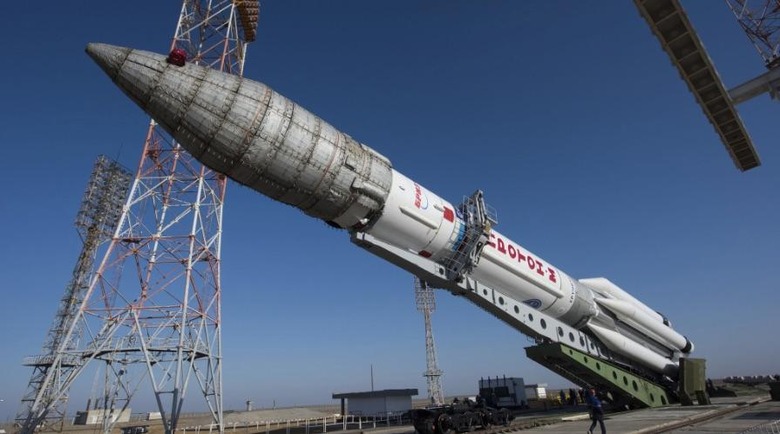Mars probe departs this week on joint European-Russian study
As part of the ExoMars 2016 mission, a new unmanned spacecraft will be departing for Mars on Monday thanks to collaboration between the space agencies of Europe and Russia. The European Space Agency (ESA) notes that the probe is heading to the red planet to study its atmosphere and dust storms, and to get there it will be riding atop a Russian Proton rocket.
The spacecraft consists of both an orbiter and a lander, with the former being used to take measurements of Mars' methane levels and other gases, while the latter will study dust storms from the ground. The rocket will be launched from Kazakhstan on Monday at 3:31 PM local time, with the ESA providing a live broadcast from their website.

Scheduled to reach Mars in October, the ExoMars probe will see the Schiaparelli lander separate and depart for the surface at a speed of 13,000mph. It will decelerate before reaching the surface, where the hope is that it will make a successful landing as a follow-up the ESA's last failed attempt in 2003.
The lander's batteries will only last between two and four days, so its observations of Mars' dust storm season will be brief. The Trace Gas Orbiter, however, will remain in operation until at least 2022, circling above the planet at height of 250 miles. Its study of gases including methane, water vapor, and nitrogen is related to the overall research on if life could exist on Mars.
NASA was originally supposed to work with the ESA on the ExoMars mission, but tight finances meant they had to withdraw from participating in 2012. With Russia stepping in, the collaboration with Europe will also see a rover launched between 2018 and 2020.
SOURCE: ESA
